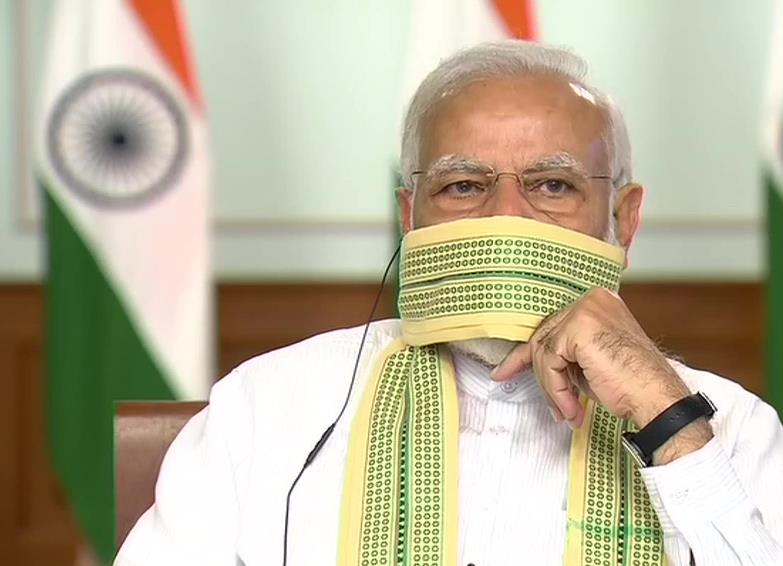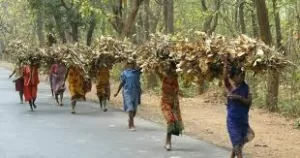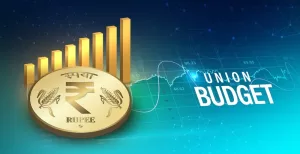Article 1
Modi Government is on a Dangerous Course
Prabhat Patnaik, 08 May 2020
Despite repeated demands by the states, the Centre has still not released what is their legitimate due, namely, compensation for their revenue loss owing to the introduction of goods and services tax or GST; this has not been paid since August.
Meanwhile, the COVID-19 pandemic, while adding to the responsibilities of state governments, has dried up their revenues owing to the lockdown. The main sources of revenue now left to them, leaving aside GST, are taxes on petro-products and alcohol, and stamp duty. Since petro-product sales have plummeted during the lockdown, they can hardly hope to get anything from this source; likewise, with all alcohol shops closed during the lockdown, the revenue from this course, too, has dried up completely. And since this period of social distancing is hardly the time for people to be buying or selling property, the revenue from stamp duty has vanished.
At the same time, state governments are being called upon not just to meet their normal expenditure but also the additional expenditure needed to meet the coronavirus crisis, such as, for instance, in equipping hospitals, in testing and in quarantining large numbers of people. An obvious immediate way to meet this emergency situation would be to increase the borrowing limits of state governments. But this requires the permission of the Centre, which has again refused to give any such permission. The plight of the state governments, in other words, is nothing short of desperate.
Even an increase in states’ borrowing limits will not be enough. When they would go to the market to raise loans, the interest rate they would have to pay will be exorbitant, which will push them into a debt-trap, especially considering the fact that in the foreseeable future, even after the COVID-19 crisis gets over, the economy will continue to experience sluggish growth. (The possibility of a debt-trap arises when the interest rate on borrowing exceeds the growth rate of income).
It is not only important that state governments’ borrowing limits be raised, but that they also have access to low-cost borrowing, which means outside of the market. (This is exactly, in a different context, what the Italian government has been demanding of the European Union, while mooting the idea of Eurobonds). A simple and obvious solution here would be if state governments are allowed to borrow from the Reserve Bank of India (RBI) at some pre-fixed interest rate, such as the repo rate, that is the rate at which banks borrow from the RBI.
But, this again would require the Centre’s permission. While state governments are given Ways and Means Advances by the RBI to overcome their liquidity problems, these advances are only temporary accommodations; they are not loans. They are very short-term and cannot be rolled over ad infinitum, for, if they were, then they would become loans. As regards loans, state governments are simply not allowed to borrow from the RBI.
What is required in the current situation, which is an unprecedented one, is a waiver of this rule; and the Centre can do this. But a Centre that has not even given GST compensation to states to which they are legally entitled, and has not budged an iota on the question of raising the borrowing limit of state governments, can scarcely be expected to allow them to borrow from RBI.
It may well be asked: if state governments are under acute financial stress then so, too, is the Centre. How then can it be expected to come to state governments’ rescue? The answer to this question lies in the fact that within our overall financial arrangement, which has become extremely conservative in the effort to appease globalised finance capital, there is also an asymmetry: the Centre has far greater freedom than state governments.
The Centre can violate its fiscal deficit limit when it feels like: its only constraint within the neo-liberal setting is the attitude of globalised finance (which, in turn, is guided by the credit-rating agencies); it can get the RBI, within limits, to monetise its deficit. And it can even commandeer resources, without taking anyone’s permission, from public sector units, from the Railways, from universities, and from the entire private corporate sector, through schemes like PMCARES for purposes that remain unspecified and unclear.
The state governments, by contrast, have to adhere strictly to borrowing limits, have no access to the RBI for loans, and can get hauled up before the Centre if they try anything similar to PMCARES. Given this asymmetry, it is the Centre which has to help the states in an emergency, which the Bharatiya Janata Party (BJP) government is refusing to do.
This has been the most centralising government in India since Independence. True, Indira Gandhi during the Emergency had acquired absolute power and rode roughshod over the states, but that was after all the infamous “Emergency”, not the “normal”. Besides, the states’ taxation powers were still intact then; but now they have been largely surrendered because of GST, under which the GST Council, and not state government as earlier, fixes the tax-rate that can be charged on any commodity. And having enticed the states to accept the GST, the BJP government now reneges on the promise of compensation on the basis of which it had enticed the states.
Besides, during Indira Gandhi’s time, an extremely powerful movement had built up, led by the Left Front government of West Bengal, against centralisation, of which the various Chief Ministers’ conclaves, culminating with the one in Srinagar, were the milestones.
But the BJP government’s centralising tendency has taken the form of breaking any such move through a mixture of carrot and stick methods against Chief Ministers, to a point where even the abrogation of Article 370, and the utterly un-constitutional step of getting a Centrally-appointed governor of that state to substitute himself for the elected Legislative Assembly and agree to a bifurcation of the state and its reduction to the status of two Union Territories, were approved by several Opposition Chief Ministers.
Since it is state governments that have to bear the brunt of providing relief to the distressed working people in these days of the pandemic, denying resources to them amounts, ipso facto, to a denial of succour to the distressed people. The abridgement of federalism, in other words, also has an important class angle. But, it is also dangerous for an additional reason.
Federalism in India is not just an administrative arrangement. It is an expression of the fact that a dual national consciousness pervades the thinking of every Indian, a pan-Indian consciousness, together with the consciousness of being a Bengali or a Gujarati or a Tamil or a Kannadiga or a Maharashtrian or a Punjabi, i.e. the consciousness of belonging to a regional-linguistic group.
An effort must always be made to maintain the right balance between these two kinds of consciousness. India’s federal arrangement must be based on such a right balance. Excessive centralisation, such as was being attempted in Indira Gandhi’s time, or is being attempted now with a certain degree of success, weakens not just the states but the totality of this structure. It makes the totality of India fragile.
In other words, this is not a situation of what is called a “zero-sum game”, where the centralisation of resources and powers makes the states weak and correspondingly strengthens the Centre; in the process of doing so it actually makes the totality, i.e. the entire arrangement, weak and vulnerable, a point which the late West Bengal Chief Minister, Jyoti Basu, never tired of emphasising during the early 1980s when he was leading the struggle against Indira Gandhi’s centralising efforts.
Given the banality of its thinking, the BJP is incapable of comprehending this. It believes, on the contrary, that the country can be held together and strengthened only by having a strong Centre; but that is authoritarian thinking, which does not understand the formation of modern India, and its project of building a democratic, secular, inclusive and egalitarian society. BJP-type thinking must necessarily apotheosize brute force and would end up weakening the very foundations of modern India by encouraging fissiparous tendencies.
The Centre’s attitude towards the financial needs of states during this pandemic is symptomatic of this thinking. It represents a dangerous course.
(Prabhat Patnaik is Professor Emeritus at the Centre for Economic Studies and Planning, Jawaharlal Nehru University, New Delhi.)
✦✦✦
Article 2
COVID-19: How the Pandemic Was Used to Grab All Power
Subodh Varma, 7 May 2020
Silently, political power in India has now become concentrated with the Ministry of Home Affairs and the ever present Prime Minister’s Office. This has happened in the name of fighting the COVID-19 pandemic and so, there has not been much comment on this. It means undermining the rights and responsibilities of not only other central ministries but, more importantly, those of state governments and lower levels of administration. This has compromised the fight against the pandemic by imposing a one-size-fits-all strategy on this diverse country. Districts with no or a few cases of COVID-19 infection were under as stringent a lockdown as those with hundreds of cases. Procurement of essential personal protective equipment (PPEs) and other equipment was hamstrung. And, worst of all, an ambiguous and ill-thought out ‘strategy’ became the standard operating procedure for the whole country’s bureaucracy.
The Legal Sanction: Initial Fumbling
In the initial weeks after the first case was found at the end of January, some states invoked the British era Epidemic Diseases Act (1897) to deal with the looming crisis, along with usual provisions of the Criminal Procedure Code for imposing restrictions on assembly, etc. The Modi government itself advised this invocation. This Act, described by some experts as one of the most draconian laws passed by a colonial administration, has only four sections, and if you read them you will understand why; it gives sweeping, over-riding powers to state governments to deal with epidemics. These include unfettered powers to arrest people, isolate them, use force at will, destroy property, etc. Regulations framed under this Act by states were issued and they went several steps ahead in specifying what is permitted and what is not.
However, this initial period of state level responses was a period of groping in the darkness. The Modi government had invoked the Disaster Management Act (2005) but its potential as a power concentrating magic wand was perhaps still dawning on them. It was revealed as the true brahmastra (ultimate weapon) only when Modi announced the countrywide lockdown in his typical muscular and dramatic style (remember demonetisation and surgical strikes?) on March 24 March. Giving a four hour notice to the country’s 1.5 billion people, India became a prison, with only essential services allowed, and social distancing became the new law of the land.
Disaster Management Act
This act, though invoked by the Modi government earlier, came to the forefront after March 24, with the central government issuing orders to all state governments and local bodies that they were bound by this law to follow the directions of lockdown. In one fell swoop, all the powers to deal with the pandemic were swept up and concentrated into the one body that deals with national disasters – the Ministry of Home Affairs.
The very origins of this Act are rooted in a grey zone. The Constitution has no entry for ‘disaster management’. But after the 2004 Asian Tsunami, the then UPA 1 government passed the law as a central legislation by rather bizarrely arguing that it came under the Concurrent List entry (#23) of “social security and social insurance”. Such was the ambiguity about this that in 2006, the second Administrative Reforms Commission had to point out that to give this Act legal sanctity, an entry on disaster management must be made in the Seventh Schedule of the Constitution. Needless to say that nobody paid any attention to this and the Act continues. With the COVID-19 pandemic, it has been put to use with alacrity and vigour by the Modi government.
Here are some of the key provisions of the DMA. It provided for setting up a National Disaster Management Authority (NDMA) headed by the Prime Minister. This body thus becomes the supreme body for implementing various policies under the Act. Extensive power is given to the Central Government and NDMA. Sections 35, 62 and 72 provide that irrespective of any law in force (including any over-riding powers), the central government can issue any directions to any authority anywhere in India to facilitate or assist in disaster management. Various other sections (18, 24, 36, 38, 39) provide that any such directions issued by the central government and NDMA must necessarily be followed by all the Union ministries, state governments and state disaster management authorities.
Remember, the whole edifice is under the Home Ministry because they have administrative control over all ‘disaster management’. And, it is also provided [Sec 6(3)] that the prime minister can exercise all powers of NDMA. So, PM Modi and Home Minister Amit Shah, are now legally authorised to run the whole country – and woe on anybody who questions that.
One Step Forward….One Step Back
Lockdown 1.0 was imposed as per Order dated 24-03-2020 of NDMA ‘to take measures for ensuring social distancing so as to prevent the spread of COVID 19’. Detailed guidelines were then issued by the Home Ministry the same day.
Since then, about 80 orders have been issued by the Home Ministry. These range from various humdrum advisories to over a dozen clarifications, mostly in the nature of exemptions from the lockdown. For instance on March 27, the clarification exempted agricultural operations from the lockdown. This had to be done because the valuable and crucial rabi harvest (wheat, mustard, etc.) was standing ready and ripe in the fields. Similarly, other exemptions were issued for fisherfolk, etc. All this is worth noting because it is following a typical pattern of how an overcentralised strategy stumbles and gropes its way if other stake holders (state government, other ministries, local bodies) are not kept on board. It sounds bizarre but still its true that the bureaucrats framing the orders under Shah and Modi’s guidance were not aware that: rabi crops need to be harvested; that lakhs of migrant workers will be stranded and want to go back home; etc. They locked down everything in a shock and awe style, only to retreat step by step.
States Feeling the Pressure
The state governments are feeling the pressure of these ham handed policies and erosion of their rights significantly. By banning the production and sale of alcohol in the lockdown, the Modi government effectively cut 30-40% of revenue that states used to get from their excise duties. There was no consultation about this, and recently state governments raised the issue of steeply falling revenues from own taxes at a meeting. Reports suggest that states revenue has fallen by as much as 80-90%, severely handicapping their efforts to fight the pandemic. They are not being allowed to raise loans, and even the possibility of raising some revenue through oil pricing was snatched away by the central government hurriedly declaring duty hikes, crowding the states out.
There have been cases – notably Kerala – where the central government has shot off letters asking why the state government is not following the lockdown procedures. This, with the only state in the country that has successfully tamed the pandemic!
But the biggest attack on states’ rights has been the withholding of the GST cess compensation that was supposed to be given to state governments. This has been continuously delayed by the Modi government in an attempt to hold on to their war chest, facing as they do a resource crunch of their own making. In fact, the Centre has spent peanuts on fighting the pandemic, with most of the so called Rs. 1.7 lakh crore relief package consisting of previous commitments. Yet, they have misused the power of money by being tight-fisted with states, who are already facing a gigantic fiscal crisis. This is a prime example of how over-centralised functioning can make beggars out of equals.
All these developments bode ill for India’s federal and democratic principles, which in turn means that they will damage and destroy many rights of the people in general, and also cause economic misery. But, in the present times, its biggest harm will be in compromising the fight against the pandemic which is far from over in the country.
(Subodh Varma is a senior Indian journalist. Article Courtesy: Newsclick.)




